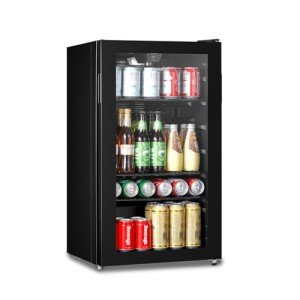The Role and Evolution of Commercial Coolers in the Modern Marketplace
In the dynamic landscape of modern commerce, the function of commercial coolers can not be overstated. These vital pieces of devices are the foundation of various markets, from grocery stores and corner store to restaurants and health care centers. This post dives into the significance of commercial coolers, their types, advancements, and the effect they have on business operations.
Intro to Commercial Coolers
Commercial coolers, likewise referred to as commercial refrigerators, are designed to keep a consistent and controlled temperature level environment for the storage of perishable goods. Unlike Personal Drink Fridges , commercial coolers are built to stand up to heavy use and are equipped with features that guarantee reliability and performance in high-demand settings. They are important for maintaining the quality and security of food, beverages, and other temperature-sensitive products.
Kinds Of Commercial Coolers
Refrigerated Display Cases
- Vertical Coolers: Commonly discovered in supermarkets and corner store, these systems permit customers to view and select items quickly.
- Horizontal Coolers: Often utilized for showing drinks and small products, these systems can be either open or with glass doors.
Walk-in Coolers
- Walk-in Freezers: Large, room-sized units developed for bulk storage of frozen products.
- Walk-in Coolers: Similar to walk-in freezers however preserve a higher temperature, suitable for keeping dairy, produce, and other perishables.
Undercounter Coolers
- Bar Coolers: Compact systems developed to fit under bar counters, perfect for saving drinks and mixers.
- Prep Coolers: Used in kitchen areas for saving ingredients and ready foods.
Bottle Coolers
- Single-Door Coolers: Ideal for small spaces, these systems are frequently used in workplaces and small retail settings.
- Multi-Door Coolers: Larger systems with multiple compartments, suitable for high-volume sales environments.
Reach-in Coolers
- Single-Door Reach-ins: Compact and effective, these units are perfect for small companies and restaurants.
- Double-Door Reach-ins: Offer more storage area and are ideal for medium-sized operations.
Advancements in Commercial Coolers
The innovation behind commercial coolers has advanced significantly over the years, causing more effective and sustainable choices. Some noteworthy developments consist of:
- Energy Efficiency: Modern coolers are designed to consume less energy, reducing functional costs and ecological effect. Features like LED lighting, high-efficiency compressors, and advanced insulation add to this.
- Smart Technology: Many commercial coolers now feature smart features, such as remote monitoring, temperature notifies, and automated defrost cycles. These technologies improve functional effectiveness and product security.
- Eco-Friendly Refrigerants: The usage of eco-friendly refrigerants, such as R-290 (gas) and R-600a (isobutane), is becoming more common, decreasing the carbon footprint of commercial coolers.
- Customization: Manufacturers are offering more adjustable options, permitting companies to customize their coolers to particular requirements, such as size, design, and features.
Influence On Business Operations
Commercial coolers play a crucial function in several elements of organization operations:
- Product Preservation: By preserving optimal temperature conditions, coolers make sure that products remain fresh and safe for usage, lowering waste and enhancing consumer satisfaction.
- Operational Efficiency: Efficient cooling systems minimize downtime and maintenance costs, permitting companies to concentrate on other crucial operations.
- Consumer Experience: Well-maintained and aesthetically pleasing coolers can improve the shopping experience, motivating clients to make purchases.
- Regulatory Compliance: Commercial coolers assist services fulfill health and security policies, guaranteeing compliance and preventing penalties.
FAQs
Q: What is the difference in between a commercial cooler and a family fridge?
- A: Commercial coolers are created for heavy usage and are constructed with more robust materials and advanced features to ensure reliability and efficiency in high-demand settings. Home refrigerators, on the other hand, are created for personal use and are not equipped to deal with the exact same level of use or storage capacity.
Q: How can I ensure my commercial cooler is energy effective?
- A: To guarantee energy efficiency, pick a cooler with an Energy Star score, use LED lighting, keep regular cleaning and upkeep, and think about smart functions like remote monitoring and automated defrost cycles.
Q: What are the advantages of using environmentally friendly refrigerants in commercial coolers?
- A: Eco-friendly refrigerants, such as R-290 and R-600a, have a lower international warming capacity (GWP) and ozone deficiency capacity (ODP) compared to conventional refrigerants. This lowers the ecological effect of commercial coolers and helps companies satisfy sustainability goals.
Q: How frequently should I clean up and maintain my commercial cooler?
- A: Regular cleansing and maintenance are vital for the ideal efficiency of commercial coolers. It is suggested to clean the cooler a minimum of once a month and perform a thorough upkeep check every six months. This consists of checking the seals, cleaning up the condenser coils, and guaranteeing the temperature level settings are precise.
Commercial coolers are vital in the modern market, offering necessary services that ensure the quality and security of disposable items. With developments in technology and a growing focus on sustainability, these units are ending up being more efficient and ecologically friendly. By comprehending the different kinds of commercial coolers and their influence on service operations, owners and supervisors can make informed decisions that benefit both their operations and the environment.

